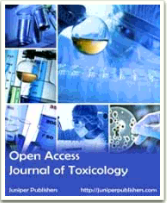Juniper Publishers wishes Happy Easter to you and your family members

Juniper Publishers Happy Easter
Juniper Publishers Open Access Journal of Toxicology is a peer reviewed, international online publishing scientific journal. This Journal focuses mostly on the study of adverse effects of xenobiotics on the health of humans and animals and impact on safety estimation and hazard evaluation. This journal aims towards publishing original research articles, review articles, Short Communications, Case Reports, Mini- Reviews, Opinions, Letter to Editors, Etc.


